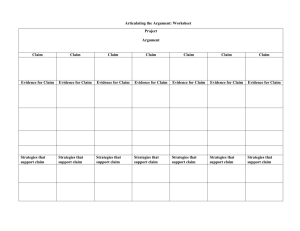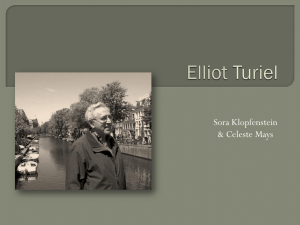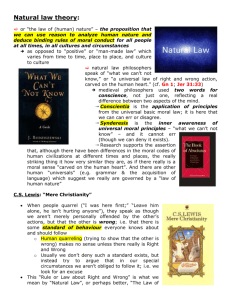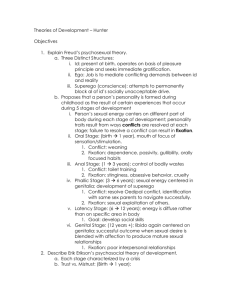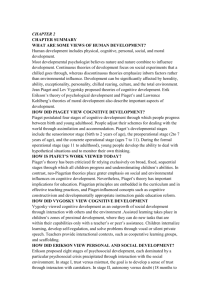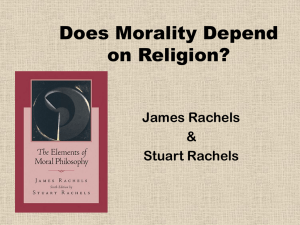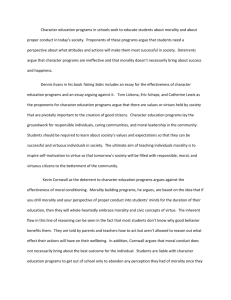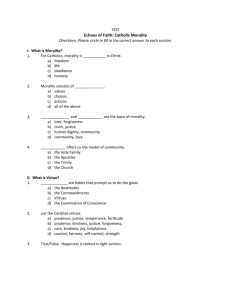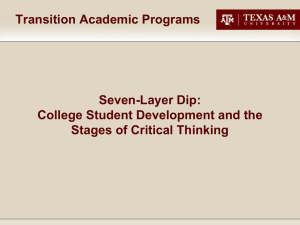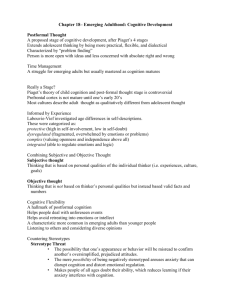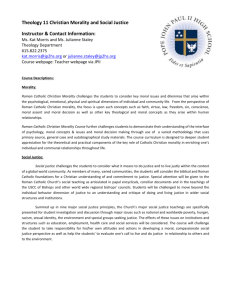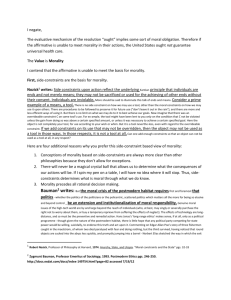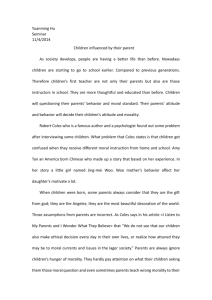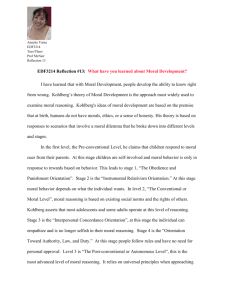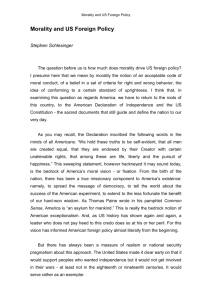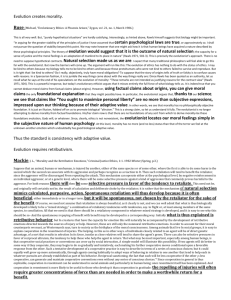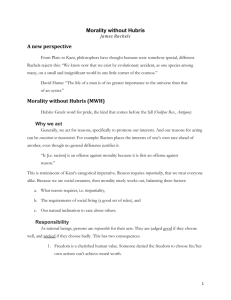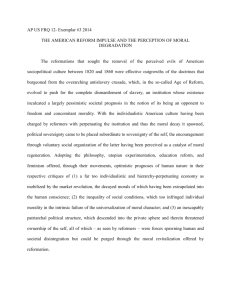Preoperational Thought and Moral Development Reading
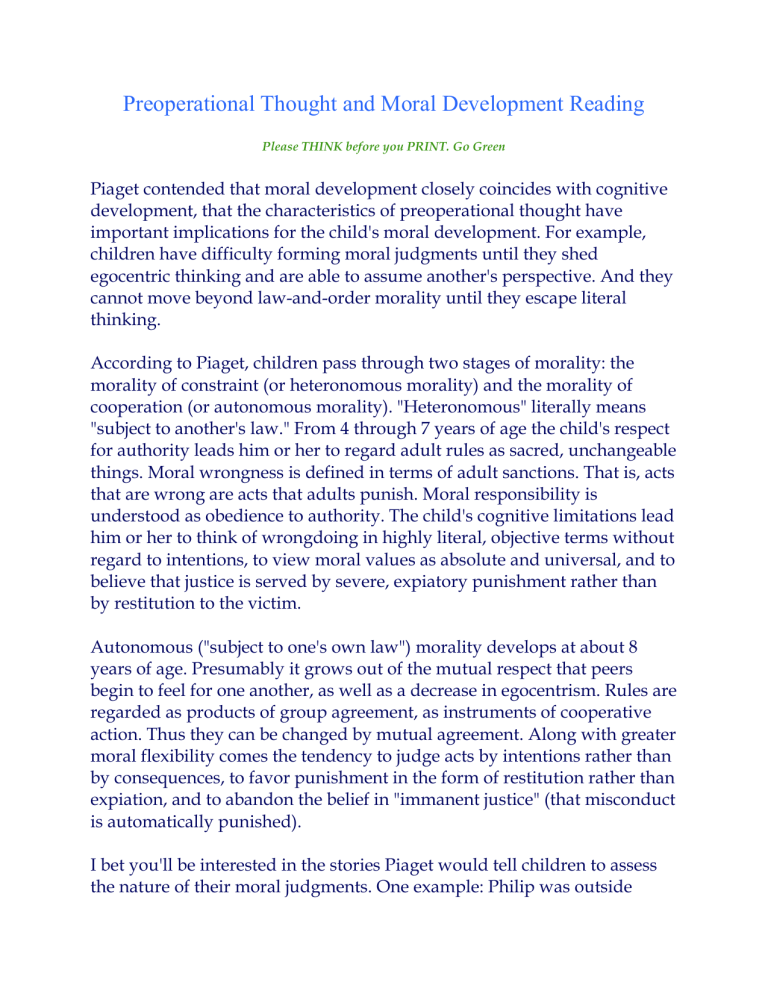
Preoperational Thought and Moral Development Reading
Please THINK before you PRINT. Go Green
Piaget contended that moral development closely coincides with cognitive development, that the characteristics of preoperational thought have important implications for the child's moral development. For example, children have difficulty forming moral judgments until they shed egocentric thinking and are able to assume another's perspective. And they cannot move beyond law-and-order morality until they escape literal thinking.
According to Piaget, children pass through two stages of morality: the morality of constraint (or heteronomous morality) and the morality of cooperation (or autonomous morality). "Heteronomous" literally means
"subject to another's law." From 4 through 7 years of age the child's respect for authority leads him or her to regard adult rules as sacred, unchangeable things. Moral wrongness is defined in terms of adult sanctions. That is, acts that are wrong are acts that adults punish. Moral responsibility is understood as obedience to authority. The child's cognitive limitations lead him or her to think of wrongdoing in highly literal, objective terms without regard to intentions, to view moral values as absolute and universal, and to believe that justice is served by severe, expiatory punishment rather than by restitution to the victim.
Autonomous ("subject to one's own law") morality develops at about 8 years of age. Presumably it grows out of the mutual respect that peers begin to feel for one another, as well as a decrease in egocentrism. Rules are regarded as products of group agreement, as instruments of cooperative action. Thus they can be changed by mutual agreement. Along with greater moral flexibility comes the tendency to judge acts by intentions rather than by consequences, to favor punishment in the form of restitution rather than expiation, and to abandon the belief in "immanent justice" (that misconduct is automatically punished).
I bet you'll be interested in the stories Piaget would tell children to assess the nature of their moral judgments. One example: Philip was outside
when his mother called him in for dinner. As he opened the dining room door, he accidentally knocked over a tray of cups, breaking all eight of them. Compare him with John who came home from school hungry.
Though his mother told him not to eat before dinner, he climbed up to the cupboard anyway to steal a cookie; while up there, he broke one cup. Who is naughtier, Philip or John? The younger child judging on the basis of consequences views Philip the naughtier. He broke eight cups. The older child examines intentions and judges John to be more culpable.
Or consider the case of Michael. After school he ran into the supermarket, stole three large, red apples and ran out the door. As he fled, a policeman saw and chased him. In attempting to escape, Michael crossed a bridge. As he reached the top, the bridge cracked, Michael fell into the water, and he was captured. Would the bridge have broken if Michael had not stolen the apples? The child who maintains a belief in immanent justice will say that the bridge cracked because of the boy's misconduct.
Or, finally, six boys were playing football. In the course of their play they trampled some recently planted shrubs and flowers. What should be done to them? Give them a spanking, never allow them to play football again, or have them plant new shrubs and flowers? Only the older child sees the wisdom of the last alternative.
Piaget, J. (1965). The moral judgment of the child. New York: Free Press.

